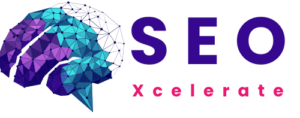Google Lens for In-Store and Local Shopping
In today’s fast-paced digital era, technology has revolutionized the way we shop, both online and offline. Google Lens, a visual search tool powered by artificial intelligence, is one such innovation transforming in-store and local shopping experiences. By bridging the gap between the digital and physical worlds, Google Lens empowers shoppers with instant access to product information, reviews, pricing, and availability, enhancing their shopping journey.
What is Google Lens?
Google Lens is a cutting-edge application developed by Google that uses image recognition technology to analyze and interpret visual inputs captured through a smartphone camera. It recognizes objects, text, and barcodes, providing relevant information instantly. For shoppers, this tool offers a new dimension to retail by making in-store shopping more informed and interactive.
How Google Lens Works for In-Store and Local Shopping
Google Lens is designed to make physical shopping as convenient as online shopping. Here’s how it functions in an in-store and local context:
- Product Identification:
Shoppers can simply point their phone camera at an item, and Google Lens will instantly identify it, providing details such as brand, model, and specifications. This is particularly useful for items without visible tags or unique identifiers. - Price Comparison:
Google Lens allows users to compare prices across different retailers. By scanning a product, shoppers can find out where it’s available at a better price, saving both time and money. - Review Access:
For informed decision-making, Google Lens provides access to product reviews and ratings. Shoppers can quickly determine the quality and reliability of a product based on user feedback. - Barcode and QR Code Scanning:
Google Lens enhances the traditional barcode and QR code scanning process by offering a wealth of additional information, including promotions, alternative products, and nearby stores stocking the item. - Store-Specific Insights:
In local shopping scenarios, Google Lens identifies nearby stores selling the product and checks for in-stock availability. This feature is invaluable for shoppers looking to support local businesses or avoid long delivery times.
Key Features Benefiting In-Store Shopping
- Augmented Reality Assistance:
By overlaying digital information on real-world objects, Google Lens offers an immersive shopping experience. For example, shoppers can view furniture dimensions or color options in real-time before making a purchase. - Instant Translation:
In international shopping hubs, Google Lens can translate product labels, tags, and instructions into the shopper’s preferred language, removing language barriers. - Style and Inspiration Matching:
For fashion and home decor enthusiasts, Google Lens identifies similar styles and matches items to help shoppers recreate a look or theme they’ve seen elsewhere. - Sustainability Insights:
As consumers become more eco-conscious, Google Lens can provide details about a product’s origin, sustainability certifications, and environmental impact, enabling responsible shopping decisions.
Benefits for Local Businesses
Google Lens is not just a tool for consumers; it also empowers local businesses by increasing visibility and foot traffic. Small retailers can ensure their inventory is accessible through Google’s database, making it easier for nearby shoppers to discover their stores. Additionally, businesses can leverage Google Lens to enhance customer engagement by integrating AR-based product displays or offering exclusive QR-code-based deals.
Challenges and Limitations
Despite its advantages, there are some challenges associated with using Google Lens for in-store shopping:
- Accuracy Issues: While Google Lens is highly accurate, there may be occasional errors in product identification, especially for items with generic appearances.
- Privacy Concerns: Shoppers may be wary of sharing their location and camera data with Google, raising privacy concerns.
- Dependence on Internet Connectivity: For seamless functionality, Google Lens requires a stable internet connection, which may not always be available in-store.
Future of Google Lens in Shopping
As technology evolves, the potential of Google Lens in the retail sector continues to expand. With advancements in AI and machine learning, future iterations of Google Lens could include:
- Personalized Recommendations: Tailored suggestions based on a shopper’s preferences and browsing history.
- Voice Command Integration: Hands-free shopping assistance for enhanced convenience.
- Deeper Retailer Integration: Direct tie-ups with local businesses for real-time inventory updates and exclusive offers.
By merging the ease of online shopping with the tactile satisfaction of in-store experiences, Google Lens is setting a new standard in retail innovation. For shoppers and businesses alike, it represents a leap forward in creating smarter, more informed, and efficient shopping ecosystems.






